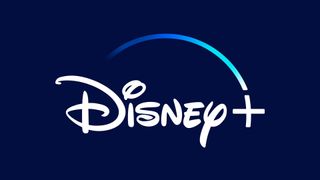Disney is huge, and it’s been huge for decades – that’s no secret. But the Disney Channel itself became one of the biggest influences on pre-teen and teenage culture for a spell of a decade or so, beginning in the mid-2000s. It underwent a rebrand two decades ago, and as had to do the same again in recent years – and other brands could learn a thing or two from its constant reinvention (see the controversy over the new Disney Junior logo)
When Anne Sweeney took over as president of Disney-ABC Television Group in 2004, live-action shows like Lizzie McGuire and That’s So Raven, featuring young casts dealing with the usual coming-of-age issues – sometimes with supernatural or far-fetched elements – had proved popular for the company.
And she helped put in place a strategy where Disney would discover and promote teen stars who would put out pop music marketed at the tween and teen markets while simultaneously starring in Disney Channel TV shows and movies. This began the previous year, with The Cheetah Girls – the first Disney Channel Original Movie to be a musical, but really kicked things up a notch in 2006 with the first High School Musical movie, as well as the series Hannah Montana, starring a certain Miley Cyrus as the titular character.

Then there was Wizards of Waverly Place (Selena Gomez) and Sonny With A Chance (Demi Lovato), and Jonas (The Jonas Brothers), sitting alongside movies like Princess Protection Program, Camp Rock, and Starstruck.
All of which helped Disney become a massively influential tastemaker with young girls. Rather than acquiring programming from elsewhere, it focused on producing original content through its own production company, It’s A Laugh Productions.
For boys, there was Disney XD, a sister channel set up in 2009 to replace Toon Disney. While it probably boasted more animated shows than the Disney Channel itself, there were live-action series like Zeke and Luther, I’m in the Band, and Kickin’ It too.
As the 2010s began, with shows like Hannah Montana and Wizards of Waverly Place starting to come to an end, a new generation of shows started, like Good Luck Charlie and Shake It Up. This coincided with people like Justin Bieber and One Direction dominating teen pop, and Disney stopped pushing the pipeline from starring in its shows to having a successful music career with the same sort of force. Shake It Up’s Zendaya has become a genuine world star, but that’s occurred almost solely through her acting career. Good Luck Charlie’s Bridgit Mendler tried a singing career, but it didn’t really come off.
Get the Creative Bloq Newsletter
Daily design news, reviews, how-tos and more, as picked by the editors.
The following generation of shows, like Best Friends Whenever, Bizaardvark, and Stuck in the Middle, were again popular with Disney’s tween audience, but didn’t capture the zeitgeist in the same way as a Hannah Montana, for example. And while some of the stars from this era, like Olivia Rodrigo and Jenna Ortega, have gone on to become big names, this hasn’t happened through Disney in the same way. It’s only really been Sabrina Carpenter, who starred in the sitcom Girl Meets World and the movie Adventures in Babysitting, who’s followed a similar trajectory to those stars a generation before her.
The success of Olivia Rodrigo, a decade younger than Cyrus, Gomez and Lovato, actually reiterates the shift in Disney’s strategy. Yes, in one sense she’s another young star to come off the conveyer belt, having appeared in Bizaardvark and then High School Musical: The Musical: The Series, but her musical influences and lyrical content are worlds apart from what you might expect from a Disney teen star. Likewise, Jenna Ortega has made a name for herself as a ‘scream queen’, starring in a range of critically acclaimed horror works in recent years.
But the Disney Channel would soon have to compete with social media and video-sharing sites, with YouTubers and TikTokers. And, of course, streaming. Young people turned to platforms like Netflix, Amazon Prime, and Hulu, and watched less traditional TV. Teenage stars like Jojo Siwa (for years associated with Nickelodeon, Disney’s rivals), Emma Chamberlain and Charli D’Amelio, who all shot to prominence in the mid-to-late 2010s, all relied on platforms like YouTube, TikTok, and Instagram.

This is why a shift in focus to Disney+ made perfect sense. Outside of the US, the Disney Channel itself would close, with its content moving to the streaming platform. But alongside Disney Channel content, there are myriad classic Disney movies, but there’s also Marvel, Star Wars, National Geographic, and less child-oriented sitcoms like Modern Family and New Girl. Meanwhile, the Disney Channel itself has reduced its focus on pre-teen girls, going for more of a gender-neutral split.
It’s still popular, if not the cultural behemoth it was 15 or 20 years ago, but Disney had to adapt to the rise of the first generation of true digital natives. Disney’s current strategy isn’t perfect, and its more recent live-action shows haven’t all been brilliant, but it certainly made the right move with the Disney Channel.
For more Disney branding and design, here are the ten best Disney logos of all time. Meanwhile, the original design of its iconic Mickey Mouse has entered the public domain this year after 96 years.






